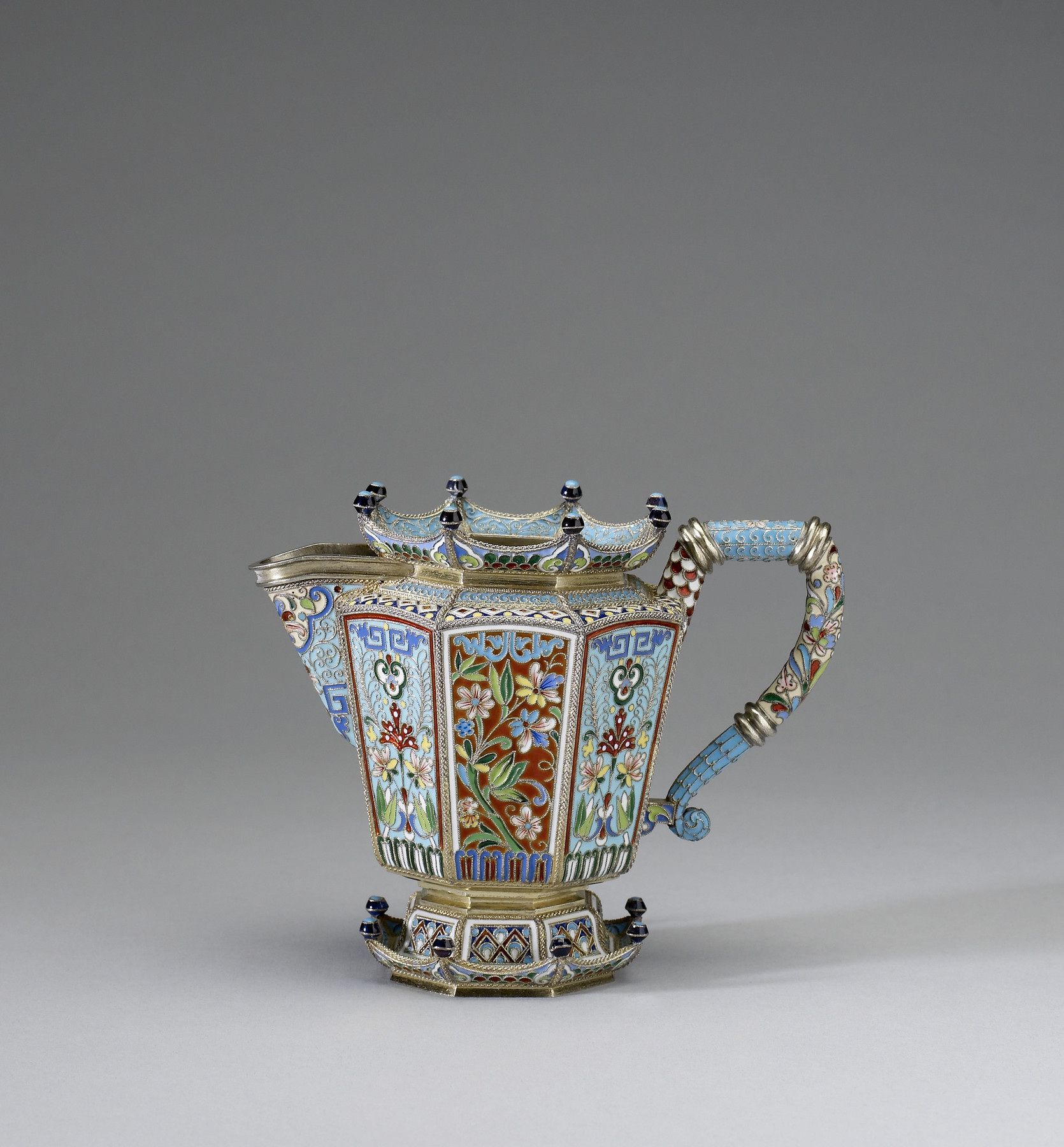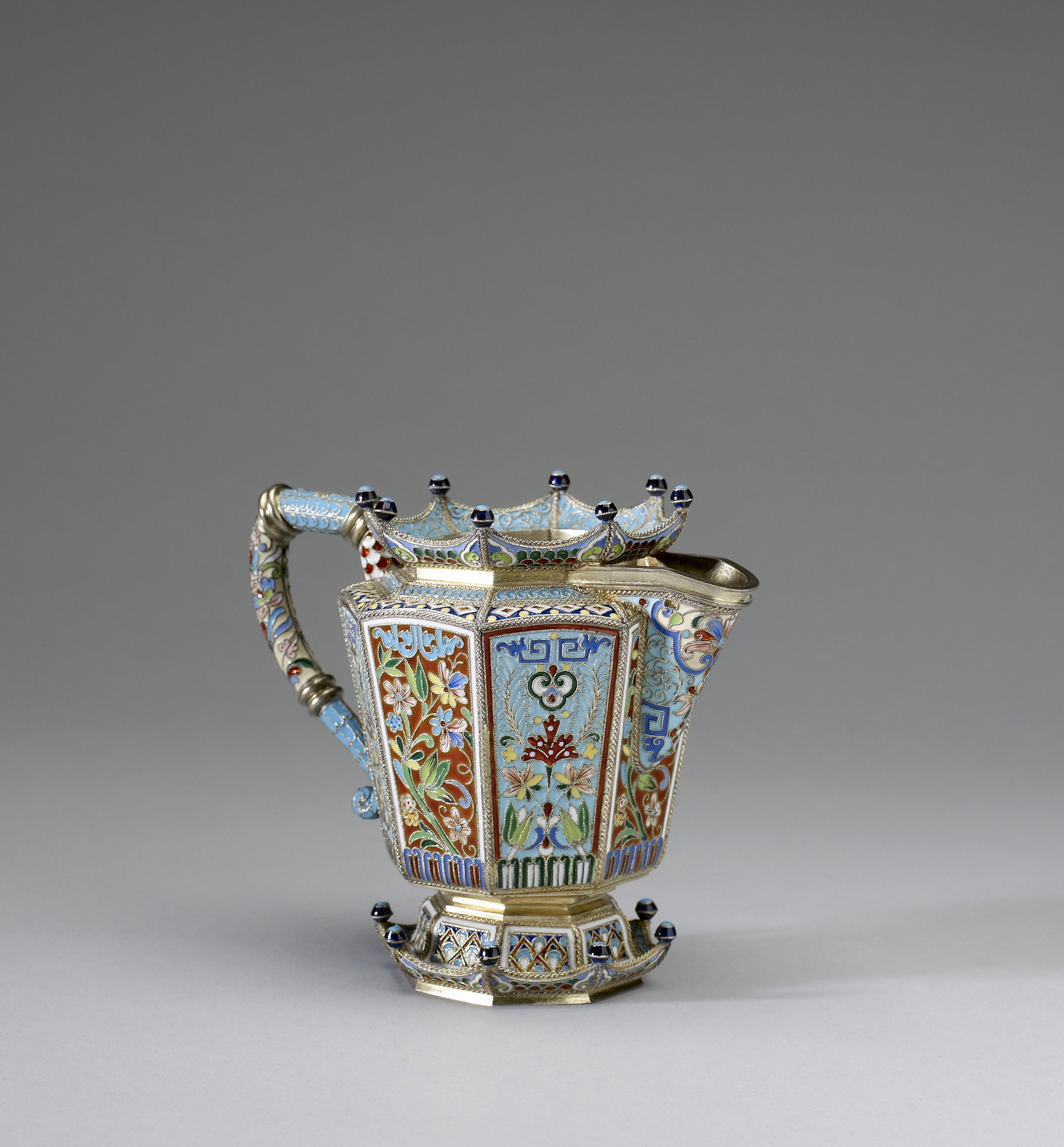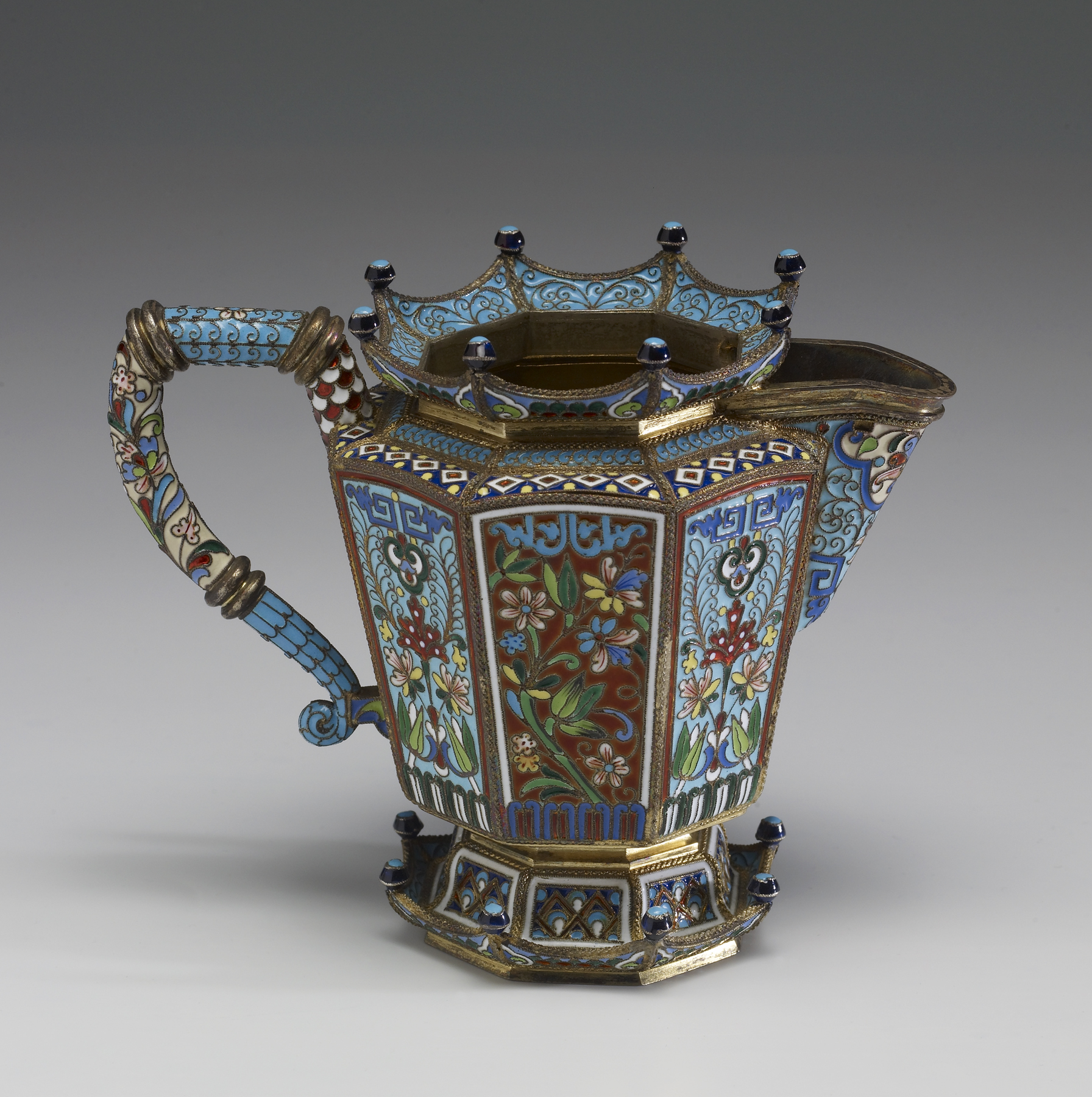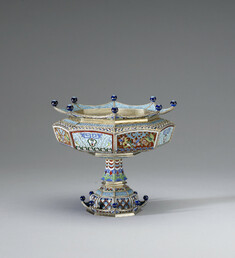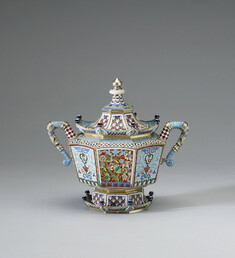Creamer from a Chinoiserie Coffee Service
(18th and 19th Centuries )
A chinoiserie flavor is imparted to this service by its exotic forms and vibrant colors. Each vessel is eight-sided and is bordered at the rim by upturned finials with knobs suggesting pagoda roofs. The sides are alternately enameled with turquoise and red grounds. On the turquoise sides, the motifs include a central, abstract flower with foiled red highlights flanked by feather-like filigree extensions and blossoms, and Chinese motifs. The red sides, in contrast, show branches of red, white, and blue flowers, green leaves and pseudo-Persian script in turquoise.
Inscription
Provenance
Provenance (from the French provenir, 'to come from/forth') is the chronology of the ownership, custody, or location of a historical object. Learn more about provenance at the Walters.
Sale, Sotheby's, New York, December 13, 1991, Lot 71; Leo Kaplan, New York, December 13, 1991, by purchase; Jean M. Riddell, Washington, D.C., December 20, 1991, by purchase; Walters Art Museum, 2010, by bequest.
Exhibitions
| 2017-2018 | Fabergé and the Russian Crafts Tradition: An Empire's Legacy . The Walters Art Museum, Baltimore. |
Geographies
Russia, Moscow (Place of Origin)
Measurements
Overall H: 4 5/16 × W with spout and handle: 5 3/16 × D: 3 1/16 in. (10.9 × 13.2 × 7.8 cm)
Credit Line
Bequest of Mrs. Jean M. Riddell, 2010
Location in Museum
Not on view
Accession Number
In libraries, galleries, museums, and archives, an accession number is a unique identifier assigned to each object in the collection.
In libraries, galleries, museums, and archives, an accession number is a unique identifier assigned to each object in the collection.
44.832

